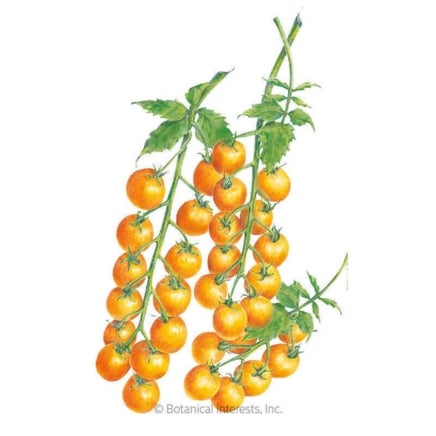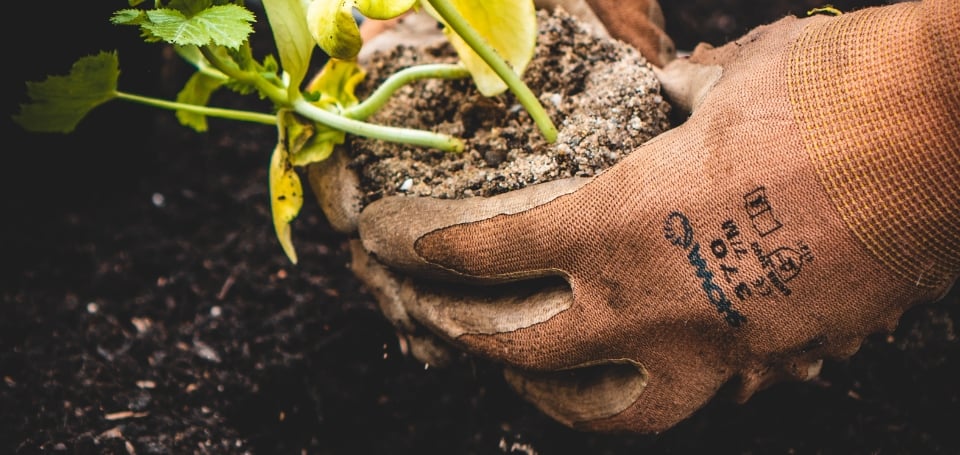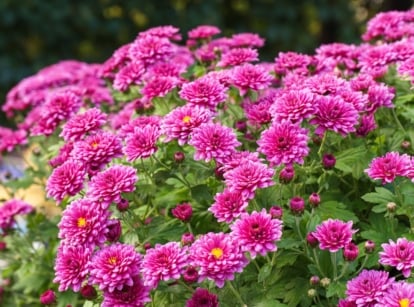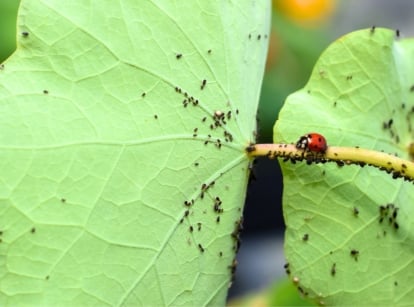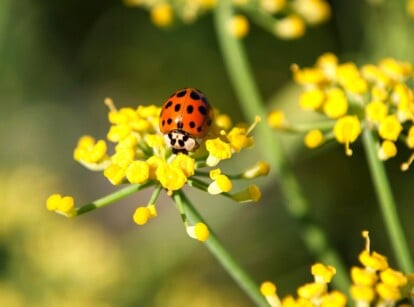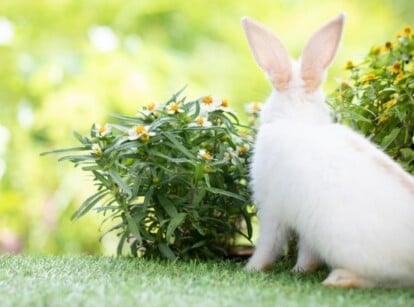13 Vegetable Garden Plants Rabbits Won’t Eat
With spring’s sweetness comes fresh, tender, new growth and the bunnies that make quick work of it. If you have rabbits in your vegetable garden, we’ve got ideas for plants they won’t devour (at least, that they don’t prefer). With a palette as expansive as ours, honing in on their least favorites means more for us. Gardening expert Katherine Rowe explores vegetable garden plants that rabbits avoid and how to use them as deterrents.

Contents
Bunnies have a universal cuteness, barring their ability to devour edible and ornamental plants while we rest. They make quick work of feasting on tender new growth and foraging on food crops, finding palatable the same delicacies we do. It’s disappointing, to say the least, to see our homegrown food, hard work, and investment go to browsing rabbits.
If you have repeat visitors, consider protecting the garden and growing vegetables that rabbits won’t eat. While every bunny’s appetite is different, there are certain plant characteristics they tend to avoid.
Rabbit-resistant vegetable garden plants include those with textural foliage (fuzzy, rough, spiny) or with thick leaves. Aromatic foliage and flowers, too, are deterrents. Toxic plants, especially, repel the invaders. They avoid nightshades, those with milky sap, and other compounds that have adverse effects.
To help beef up the perimeter, interplant with perennials and annuals they find distasteful. While a young or very hungry rabbit may test the “rabbit-resistant” designation given to some vegetables, our list includes those they generally don’t eat for unappealing scent/flavor, foliage qualities, or toxicity. Plant defenses to avoid predation often involve all three.
Perennials that bridge the ornamental and edible landscape that rabbits find distasteful (and attract beneficial insects) include:
- Asclepias spp. (Milkweed – contains toxins poisonous to people and animals)
- Monarda didyma (Beebalm)
- Nepeta spp. (Catmint, catnip)
- Pycnanthemum spp. (Mountain mint)
Annuals that rabbits tend to avoid:
- Ageratum houstonianum (Ageraturm)
- Catharanthus roseus (Vinca)
- Cleome hassleriana (Spiderflower)
- Lantana spp. (Lantana)
- Pelargonium spp. (Geranium)
Artichoke

|
|
botanical name Cynara cardunculus (Scolymus Group) |
|---|---|
|
|
sun requirements Full sun |
|
|
height 3-5’ |
Artichokes are an intriguing vegetable, delicious steamed and dipped in buttery goodness. Highly ornamental, their structural leaves and unique flower forms add visual interest in addition to their tasty yield. The silvery green, spiky, frond-like foliage fills out during the cool season, and rabbits don’t favor the texture. The artichokes follow, with three to five per plant. The parts we eat are underdeveloped flowers. Let some develop into full flowers to enjoy the purple tufts, which are showy and attract pollinators.
Artichokes perennialize in zones 7 and warmer for years of production. In warm climates, plant them in late summer and early fall. Direct sow seeds, start them in seed trays, or purchase them as nursery starts. They establish over a mild winter for spring production. Cut back the stalk in the summer to encourage a dormancy period to promote new shoots in the fall.
In cool climates, sow them indoors after the last spring frost for transplanting. Grow them through the spring and fall, cutting back the main trunk late in the season. Insulate the stalks and roots with mulch or straw for overwintering. ‘Green Globe Improved’ stems from an 1863 heirloom variety and has better production, less spiny tips, and a more uniform habit. They’ll mature in five to six months and grow across a range of climates.
Tomato

|
|
botanical name Solanum lycopersicum |
|---|---|
|
|
sun requirements Full sun |
|
|
height 8”-25’ |
|
|
hardiness zones 3-11 |
Tomatoes bring the juicy signature fruit of summer, but the leaves and stalks contain tomatine and solanine, which are toxic to rabbits. While the flesh is safe, the seeds and leafy growth contain the naturally occurring chemicals. The aromatic leaves are the tell-tale sign for rabbits not to eat tomato plants.
From heirloom to modern hybrids, big beefsteaks to bite-sized rounds, there’s a tomato for every sunny garden. For easy growing, abundant yields, and quick maturing, opt for cherry tomatoes.
‘Chocolate Cherry’ produces sweet, one-inch round cherries that ripen to purplish-red. The indeterminate vines reach up to six feet tall and produce all season. Thin-skinned and juicy, these are among the most flavorful of the cherry types.
‘Sungold’ is an early-maturing variety and a favorite for its bountiful fruits, sunny color, and sweet flavor. It resists Fusarium wilt and tobacco mosaic virus. The productive vines yield about 120 tomatoes per season.
When it’s time to harvest, pick tomatoes a few days early and let them ripen indoors. They’ll be just as tasty and less susceptible to splitting and pest damage than on the vine.
Squash

|
|
botanical name Cucurbita spp. |
|---|---|
|
|
sun requirements Full sun |
|
|
height 2-12’ |
Summer and winter squashes have leaves and stems with coarse hairs or spines. These help the vines run, cling, and climb and also resist predation. Squash is a vegetable rabbits won’t eat due to its texture, at least on mature plants. They may nibble the tender new shoots until the selections establish.
Winter squashes, like butternuts and pumpkins, mature in late summer and fall, while summer squashes, like zucchini and pattypan, produce more quickly over the summer. Winter selections take longer to develop their hefty fruits with thick skins.
Easily grown from seed, direct sow squash one to two weeks after the final frost and when soil temperature warms above 70°F (21°C). Their roots are sensitive to breakage during transplanting. In areas with short growing seasons only, try starting them indoors in biodegradable pots to allow time for development. Dwarf varieties may mature earlier, giving fewer opportunities for rabbits to forage.
Corn

|
|
botanical name Zea mays |
|---|---|
|
|
sun requirements Full sun |
|
|
height 5-12’ |
Corn is another vegetable that rabbits won’t eat, or at least one that upsets their digestion and doesn’t offer them a lot of nutritional benefits. As stalks grow tall, the ears become out of reach of the bunnies’ scope (although other clever animals chop the husk at the ground to reach the bounty).
Sweet corn is the most popular “eating” type for its high sugar and juicy kernels. In warm weather, sweet corn grows quickly from seed. Look for an early-maturing variety like ‘Golden Bantam,’ which tolerates cool spring soils. The 1902 heirloom bears sweet, yellow kernels on two sturdy ears.
Colorful additions include ‘Ambrosia’ with white and yellow kernels and supreme flavor and ‘Martian Jewels’ with pale white kernels against purple husks and cobs. Direct sow corn one to two weeks after the final frost and as soil temperatures rise above 60°F (16°C). The warmer the soil, the better the crop will develop.
Scallions

|
|
botanical name Allium fistulosum |
|---|---|
|
|
sun requirements Full sun |
|
|
height 1-2’ |
Also called spring, bunching, or green onions, scallions are an easy-to-grow cool-season favorite, fresh or cooked. In the Allium family, their pungency is a signal to bunnies to avoid the toxic compounds.
Green onions are hardy in zones 5-10. Start sowing before spring’s final frost and sow successional rounds until warm weather arrives (ideal soil temperatures are between 60-85°F or 18-29°C). Sow another fast-maturing selection in late summer/early fall to enjoy before winter.
‘White Lisbon’ is a 1700s heirloom that matures in 60 days and is reliable under various conditions. It’s heat—and cold-tolerant for weather shifts with seasonal change. ‘Tokyo Long’ is a Japanese variety with a mild, sweet, oniony flavor and long, slender stalks. ‘Italian Red of Florence’ features deep red stems for a beautiful, flavorful contrast among fresh salads and garnishes.
Rosemary

|
|
botanical name Salvia rosmarinus |
|---|---|
|
|
sun requirements Full sun |
|
|
height 3-6’ |
Rosemary adds flavor to the edible landscape in addition to form, fragrance, and flowers. Rabbits don’t eat this companion plant in the vegetable garden because of its strong lemony camphor scent and thick, needled foliage.
In early summer, small blue blooms cover the stems, adding seasonal interest to evergreen foliage and attracting pollinators. The highly fragrant leaves are ideal for clipping for fragrance, decoration, and culinary uses. Look for ‘Barbecue’ for upright stems perfect for grilling.
A Mediterranean native, rosemary thrives in full sun and exceptionally well-drained soils. It’s a drought-tolerant, carefree perennial with multi-season appeal. ‘Barbecue’ or hardy ‘Arp’ bring a stif, uprightf texture, while cascading forms like ‘Huntington Carpet’ trail and spill to soften borders and edges.
Garlic

|
|
botanical name Allium sativum |
|---|---|
|
|
sun requirements Full sun |
|
|
height 12-24” |
Garlic is part of the same Amaryllidaceae family that houses those toxic alliums. Rabbits don’t eat the pungent leaves or bulbs because of the toxins.
Garlic is easy to plant and grows with little tending over the fall and winter. It’s best to plant it in September in cold climates, waiting until October or November in warm climates when temperatures chill. In containers, tuck it in amongst your other veggies for a spring harvest.
Garlic bulbs are either hardneck or softneck. Hardnecks have a bold, spicy flavor and are easy to peel. They require a chill period and grow well in cold climates. Softneck varieties are generally smaller bulbs and work well across cold and hot climates.
‘Nootka Rose’ features pink tips on the cloves with white outer layers. It adapts to a wide range of climates with few problems. ‘Silver White’ is a mild classic with nearly one hundred years of cooking and fresh eating. It, too, adapts to variable conditions and temperatures.
Leeks

|
|
botanical name Allium porrum |
|---|---|
|
|
sun requirements Full sun |
|
|
height 2-3’ |
Another mild, versatile vegetable that rabbits won’t eat is the Allium leek. Leeks have a rich, subtle onion flavor that sweetens and mellows during cooking.
Sow them two to four weeks before the average last frost for a late summer harvest and again in late spring to enjoy in the fall. In warm climates, sow them in late summer for a spring harvest. They’ll overwinter in zone 7 and warmer.
‘King Richard’ grows long, white stems that are thick and dense. The leeks are hardy to 20°F (-7°C) for an extended harvest. They mature in 75 days as an early, full-sized selection. ‘King Richard’ is a Royal Horticultural Society Award of Garden Merit winner for its robust growth and early harvest.
Sage

|
|
botanical name Salvia officinalis |
|---|---|
|
|
sun requirements Full sun to partial shade |
|
|
height 1-2’ |
Like rosemary, sage is a classic herb to accompany the vegetable garden. Its velvety leaves and earthy scent deter bunnies. The Mediterranean perennial withstands hot, arid summers and cold winters and is hardy in zones 4 to 8.
Look for S. officinalis ‘Berggarten’ (also called ‘Herrenhausen’) for a variety with increased mildew resistance. It features broad, blue-gray leaves and lavender bloom spikes in the summer. ‘Berggarten’ holds the Award of Garden Merit status for its ornamental value and landscape performance.
Potatoes

|
|
botanical name Solanum tuberosum |
|---|---|
|
|
sun requirements Full sun |
|
|
height 1-3’ |
In the nightshade family (Solanaceae) with tomatoes, rabbits don’t prefer to eat potatoes. They may investigate or nibble the slips (starters) but tend to avoid them once growth ensues. Solanine levels make them poisonous, and they’re tough for rabbits to digest.
In northerly climates, plant potatoes after the threat of frost passes and as the soil warms. In southern zones, plant them in late summer for a cool-season harvest. Try ‘Clancy,’ a small, creamy, round potato grown from seed. The hybrid is an All-America Selections award winner for its performance. Start seeds indoors four to six weeks before the final frost. In warm growing areas, sow them in midsummer to harvest in the fall.
Rhubarb

|
|
botanical name Rheum rhabarbarum |
|---|---|
|
|
sun requirements Full sun |
|
|
height 2-4’ |
Rhubarb is a classic early spring crop with colorful, fibrous, sour stalks when raw. The intensity of sourness and color vary by variety. Cooked and sweetened into pies and breads, it becomes a complement filler, or strained with sugar, a juice.
While the stalks are edible, the leaves are toxic to people and animals. In large quantities, the edible stalks can have adverse effects on certain health conditions. High levels of oxalic acid make the old-fashioned, robust grower a good selection for vegetables rabbits won’t eat.
Rhubarb needs rich, loamy, well-drained soil to thrive. It does best in areas with long, cold winters and mild summers. A single plant grows large and is cold hardy to zone 4 (and maybe lower with winter protection). Harvest stalks in their second year of growth.
Mexican Tarragon

|
|
botanical name Tagetes lucida |
|---|---|
|
|
sun requirements Full sun |
|
|
height 6”-3’ |
Tarragon is another herb with aromatic leaves. It comes in three types: French, Russian, and Mexican. True tarragon is the French, Artemisia dracunculus. Native to Russia and western Asia but popularized in European cuisine, French tarragon has the purest anise flavor and glossy, fragrant leaves. During cooking, tarragon takes on a mellow, sweet flavor. Rabbits may come to graze on fresh growth, though some will be put off by the scent.
Russian tarragon (A. dracunculus var. dracunculus) is a taller, coarser plant with lesser flavor than the French. Vigorous plants grow to five feet tall. Russian tarragon grows from seed, while French tarragon propagates through vegetative cuttings (plants seldom flower, and seeds may be sterile).
Mexican tarragon is a heat-loving alternative to French tarragon, which doesn’t withstand hot summers. Also called summer tarragon, Mexican marigold, and Spanish tarragon, this one is really a marigold species (Tagetes lucida) native to Central and South America. Mexican tarragon produces clusters of gold, daisy-like flowers in late summer and fall. The flowers are edible and sweet, ideal for teas and garnishes. But, in quantities, they hold toxic compounds for rabbits.
Tarragon grows best in light, well-draining soils in a warm, sunny garden. Allow soils to dry slightly between waterings and provide mulch for insulation in winter.
Asparagus

|
|
botanical name Asparagus officinalis |
|---|---|
|
|
sun requirements Full sun to partial shade |
|
|
height 4-5’ |
Asparagus brings fresh green spears to early spring in its second or third year of growth. The cold-hardy perennial is long-lived (up to 15 years), and planting it in spring to let it establish is a lasting investment. Its tender, nutrient-rich stems grow quickly to reach peak readiness in cool conditions.
Asparagus is high in folate (which helps us process iron), amino acids, vitamins, and minerals. The harvest season is about two months in the spring, and the ferny upper growth can form over the rest of the warm season. The perennials have deep roots and tolerate a variety of soil types as long as they’re well-draining. They need regular moisture as roots establish.
Situate the tall selections where they won’t shade other specimens (like the north end of a bed). Companions for asparagus support them through beneficial features like deterring pests such as asparagus beetles. Tomatoes, eggplants, basil, and dill make good partners, especially in repelling bunnies.



